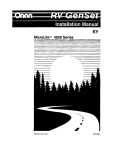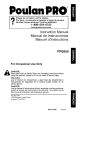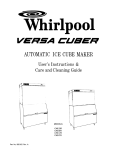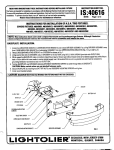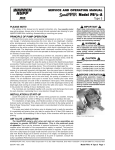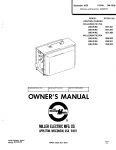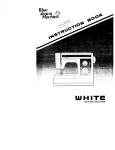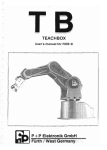Download White 634D Sewing Machine User Manual
Transcript
INSTRUCTION BOOK BUPEFILDCK 634D W H I TE Sewing machine company ____________________________ POLARIZED PLUG CAUTION appliance To reduce the risk of electric shock, this the has a polarized plug (one blade is wider than only other). This plug will fit in a polarized outlet outlet, one way. if the plug does not fit fully in the contact a reverse the plug. If it still does not fit, Uo qualified electrician to install the proper outFet not change the plug in any way. I Record in space provided below the Serial No. and Model No. of this appliance. The Serial No. is located Rear of arm. The Model No. is located Rear of arm. Serial No. Model No. 634 0 Retain these numbers for future reference. IMPORTANT SAFETY INSTRUCTIONS precautions should always be When using an electrical appliance, basic safety followed, including the following: Read all instructions before using (this appliance). DANGER —To reduce the risk of electric shock: this in. Always unplug An appliance should never be left unattended when plugged cleaning. before and using after immediately outlet appliance from the electric electric. shock,.. or injwy*tc. persons: necessary when this appliance Do not allow to be used as a toy. Close attention is is used by or near children. described in this manual. Use only 2 Use this appliance only for its intended use as as contained in this manual, manufacturer attachments recommended by the cord or plug, if it is not working damaged a has it 3. Never operate this appliance if into water. Return the properly if it has been dropped or damaged, or dropped center for examination, repai appliance to the nearest authorized dealer or service electrical or mechanical adjustment. blocked, Keep ventilation open 4. Never operate the appliance with any air openings from the accumulation of int, ings of the sewing machine and foot controller free dust, and loose cloth. 5. Never drop or insert any object into any opening. 1 oxygen is aerosol (spray) products are being used or where 8. 9. bni: plug from rn all controls to the off (“0”) position, then remove outlet. the plug, not the cord. Do not unplug by pulling on cord. To unplug, grasp DANGER with same type rated 15 watts. 1. Always unplug before relamping. Replace bulb water. Unplug immediately. into fallen 2. Do not reach for an appliance that has or be pulled into a tub or sink. fall can it where 3. Do not place or store appliance liquid. other or water Do not place in or drop into WARNING around the sewing Special care is required ts. par g vin mo all m fro 1. Keep fingers away . dle nee e the needle to break. ne chi ma The wrong plate can caus te. pla le ed ne per pro 2. Always use the it to t needles. ben e us t the needle causing not Do 3. stitching. It may deflec ile wh ric fab sh pu 4. Do not pull or in the needle break. making any adjustments en wh 0”) off ( r foot, etc. ing machine needle, or changing presse 5. Switch the sew ng ngi cha , dle nee ing oving covers, area, such as thread electrical outlet when rem the m fro ne chi ma ing nts mentioned in the 6. Always unplug sew user servicing adjustme er oth any g kin ma lubricating, or when s ch where the air opening instruction manual. ch as a bed or cou su ce rfa su t sof a on 7. Never operate IONS T C U R T S IN E S E H T SAVE CONTENTS 1, NAMES OF PARTS PARTS 2. OPERATION AND FUNCTION OF 3. PREPARATION FOR SEWING 3-1. Connecting Power Cord 3-2. Setting Telescopic Thread Stand 3-3. Changing Threads 3-4. Replacing Needle 3-5. Threading USING 2 NEEDLES 4 F-UR THREADQVERLOcksTiTCH 4-i. Bcforc Sewing 4-2. Setting the Fabric 1 2 4 4 5 5 6 7 10 10 10 4-3. Beginning and Ending of Sewing 10 re 4-4. Adjustment of the Presser Foot Pressu 11 4-5. Thread Tension Chart 4-6. Thread Tension Adjustment H AND CUTTING WIDTH 5. ADJUSTING BALANCE OF STITCH WIDT 6. STITCH LENGTH ADJUSTMENT 7. DIFFERENTIAL FEED 8. CORDED OVERLOCK 9. SEWING FOR CURVED SEAMS USING 1 NEEDLE 10, THREE THREAD OVERLOCK STITCH 11. ROLLED EDGE 12. PIN TUCKS 13. REPLACING LOWER CUTTER 14. CHANGING LIGHT BULB 15. LUBRICATION 16. ACCESSORIES LES AND THREADS 17. TABLE OF SEWING MATERIALS, NEED 18. PROBLEM SOLVING 19. SPECIFICATIONS 20. OPTIONAL ACCESSORY PRESSER FEET 12 13 15 15 16 17 17 18 19 20 21 21 21 23 24 25 26 27 1. NAMES OF PARTS 1. 2. 3. 4. 5. 6. 7. 8. 9. 10. 11. 12. 13. 14. 15. 16. 17. 18. 19. Spool pin Thread take up lever cover Pressure regulator screw Thread tension support Telescopic thread stand Thread tension dials Tension release lever Differential feed dial Stitch length dial Presser foot lifter Cutting width adjusting dial Presser foot Upper cutter Front cover Cutter cover Front panel Handwheel (Right side of machine) Stitch finger knob Stitch finger I- Needle plate —1— 2. OPERATION AND FUNCTION OF PARTS Handwheel + Always turn handwheel toward you. Changing Presser Foot Switch off the machine. 1. Raise presser foot. 2. Raise needles to their highest position by turning handwheel toward you. 3. Push red button A and foot will come off. 4. Position the new foot with the pin right under the groove of the ankle. Lower presser foot lifter so that holder catches the presser toot. Opening Front Cover To open front cover, push part B of cutter cover to right and pull it down toward you. Closing Front Cover Push part B and close it. + Always close front cover when sewing. —2-- Stitch Finger Knob (Conversion from overlock to rolled edge) highest position by + Raise needle to the turning handwheeItoward you. For Overlock: Push stitch finger knob to align line © on needle plate. it Stitch finger knob with the rear red For Rolled Edge: Pull stitch finger knob toward you to align it with front red line t on needle plate Needle plate ,,,,,,,, Presser Foot Lifter Raise the presser foot lifter to lift up the presser foot. Presser foot lifter stops at position A. When replacing presser foot or sewing very thick materials, presser foot lifter can be lifted up one more step to obtain wider gap. foot foot Disengaging Upper Cutter For ease in threading, push the upper cutter holder screw from A side with the forefinger of your left hand + and grasp the right end of the holder C, and turn it in the direction of arrow B with your right hand. 8 + Since the upper cutter is sharp. care should be taken when moving this part. Be sure to put cutter back down before sewing. cutter —3— 3. PREPARATION FOR SEWING 3-1. ConneCting Power Cord cord ® Connect foot control and power be sure that the Before plugging in your machine, machine. (written voltage is same as that of your on a plate at back of machrne). country to country. ± Specifications vary from turn on the Press the switch on the machine to light. power and the sewing machine when not ± Always switch off or unplug in use. the faster the The more you press the foot control, machine runs. the machine When the power switch is turned off, on the foot will not operate even by pressure control. ÷ DO NOT put anything on foot control. —4-- 3-2. Setting Telescopic Thread Stand Extend the telescopic thread stand to its full height, then turn it until the shaft clicks into its locked position. 3-3. Changing Threads The machine is supplied with thread but iiiy I au •.y spool (1) Cut the thread in use near the cone the Place (behind the telescopic thread stand). end the to new thread on the spindle and tie it of the original thread. presser (2) Raise the presser foot lifter to lift up the foot. the (3) Press down the tension release lever so that draw smoothly, through thread knot can pass out the looper thread until the thread knot comes to about 10 cm past the presser foot. off (4) When changing the needle thread, cut the of eye the reaches it before the thread knot needle to avoid bending the needle as the knot is pulled and caught in the needle’s eye. —5— Cover the spool with the “NET” as needed to prevent thread from slipping down on thread cones. When using a standard type thread spool, insert the spooi adapter (supplied with the machine) (as shown). 3-4. Replacing Needle Clamp Scr Replace needle in the following way: Note: be sure to take out the power supply plug before replacing needle. (1) Bring needle to its highest position by turning handwheel towards you. (2) When replacing right needle, loosen right needle clamp screw and remove needle. For left needle replacing, loosen left needle clamp screw. (3) With the flat side away from you, insert the new needle into groove of needle bar as far as it will go. Use “HAx1 #11—#14” (SCHMETZ 130/705H. NO: 75-.9O) These are the same as for home-use sewing machine. Right Needle Clamp Screw Tighten Loosen \ —6— 3-5. Threading When threading the machine from the beginning, threading must be carried out in the following sequence: First: Lower loopef threading (A) Second: Upper looper threading (B) Finally: Needle threading (C, D) (1) Lower looper threading (A) Open front cover. (See Page 2) Take the thread drawn from the spool and pass it, through guide © of the thread stand and then, in order, through guides ©— ©and thread tension dial ©. (Fig. A) Fig. A While pressing down the tension release lever with your right hand, lay thread between thread tension discs with your left hand. (Fig. B) Bring the lower looper to the far left position by turning handwheel towards you, and pass the (Fig C) thread through lower looper thread guide Hook thread around part S from back to front as illustrated. Then, move the lower looper slightly to the right by turning the handwheel towards you. Thread the hole of the lower looper 9 . using tweezers. Cut the thread leaving about 10cm (4”) of spare thread. (Fig. D) —7-- (2) Upper looper threading (B) Bring the upper looper to its lowest position by turning handwheel toward you. Draw thread from spool and pass it, through guide ( of the thread stand and then, in order, through guides ©-.Ø.(Fig. A) While pressing down the tension release lever with your right hand, lay thread between thread tension discs with your left hand. (Fig. B) Thread the hole of upper looper © using tweezers. Cut the thread leaving about 10cm (4”) of spare thread.(Fig. C) Close the front cover. —8-- (3) Needle Threading (C) (D). For ease in threading, turn the moveable cutter to the non-operating position. (See Page 3). 1. Raise the needles to their highest position. 2. Draw thread from spool and pass it through guide ®. 3. Lay thread between thread tension discs © while pressing down the tension release lever. 4. Pass thread through guides ©, ®, © for right needle thread. Pass thread through guides ©, © for left needle thread. (Fig A) Fig. A 5. Then thread each needle’s eye ©. Cut the thread leaving about 10cm (4”) of spare thread. Use tweezers for easy threading to needle’s eye. Preparation for Sewing and Checking I- F Check that no thread slips off guides, or breaks. Confirm that the upper cutter moves against the lower cutter correctly by turning the handwheel slowly towards you. If it is not correct, check if there is any fabric or waste thread between cutters. Turn the handwheel towards you with your right hand to check that the thread winds around the stitch finger of the needle plate. If the thread doesn’t wind around the stitch finger of the needle plate, check if any threads are threaded incorrectly. —9— 4. FOUR THREAD OVERLOCK STITCH USING 2 NEEDLES 4-1. Before Sewing After threading is completed, and when the threads are not wound around the stitch finger, gently draw out the four threads under and behind the presser foot, and turn the handwheel towards you by hand two or three times to make stitch form on the stitch finger. 4-2. Setting the Fabric When beginning to sew, place the material just ahead of the presser foot and it will be fed through. There is no need to raise the presser foot lifter. For setting the very thick material; Raise presser foot lifter to lift up the presser foot. Place the material under the presser foot and push it to the front of the cutter and lower presser toot before sewing. 4-3. Beginning and Ending of Sewing (1) Beginning to sew Place the material under the toe of the presser foot and begin sewing slowly. —10— (2) Ending of sewing Sew off the material forming a chain to prevent the thread from untying and to prepare for the next sewing. — Draw the finished fabric gently backwards and to the left as the machine is operating and make chain-stitches. This is called chain-stitch sewing. Then cut the thread 5 6cm (2”) from the presser foot + Do not pull it out roughly as the needle will bend and break. 4-4W Adjustment of the Presser Foot Pressure The presser foot pressure is pre-adjusted for materials of medium (standard) thickness. Adjustment is necessary only when you work on very thin or very thick materials. Accordingly, sew thinner materials with less pressure and thicker materials with more pressure. Increase the pressure of the presser foot by tightening the adjustment screw. \— —11— 4-5. Thread Tension Chart ‘N.N. N THREAD TENSION N.. PATTERN’N STITCHES OVERLOCK ROLLED Ffl(F FINE ROLLED EDGE Left Needle II1 Right Needle Upper Looper Lower Loope 1II STITCH CUTTING [J LENGTH WIDTH 2.5-5 mm 5-6 mm 1-1.5 mm 5-6 mm C>IH t>Il4I 4 4 4 4 4 A 0 4 4 [LJ — — LJ II! 4 The tension for each of the thread tension dials should be different according to the pattern stitches as in the chart above. Since the figures in the chart are for average strength of thread tension, it may be necessary to adjust the thread tension slightly. Thread tensions will differ according to the kind of fabric and the thread. The differential feed ratio is normally “N”. (See R16) —12— 4-6. Thread Tension Adjustment Set the balance of the tension as weak as possible. To tighten the tension, turn tension dial to a higher number. To loosen the tension, turn tension dial to a lower number. ® Left needle thread tension © Right needle thread tension © Upper looper thread teqsion Lower looper thread tension (1) Correct tension. • Lower looper thread and upper thread should be well balanced with same tension. (Both looper threads should make crosses at the edge of the thread fabric.) • Needle thread should not be slacken, or pulled. Right needle thread looper Upper looper thread (2) Unbalanced upper looper thread wraps round and over the back: Tighten the thread tension of the upper looper (Dial ©)or loosen the thread tension of the lower looper (Dial ©). —13— - - — a_ - - D . CD U) 0 — 3_0 0. CD — a . C — - o_ — (D? -‘0 - T. - .. U) CD 0 0 0 0 — — . . CD CD a C (P CD0 CD 0-’ zT CD U) 0 0. CD z. CD 0 C) Z CD CD CD oO. 0.CD C.) 5. ADJUSTING BALANCE OF STITCH WIDTH AND CUTTING WIDTH • Adjust the cutting width from 5.2 (0.2”) to 7.0mm (0.28”) according to the kind of material. • The standard cutting width is 5.5mm (0.21 “). • Open the front cover to adjust the cutting width. (1) If the cutting width is narrower than the stitch width, leavinioops off the fabric edge, turn the cutting width adjusting dial to the direction of arrow. (To a bigger number) (2) If the cutting width is wider than the stitch width, causing a pucker within the overlock seam.turn the cutting width adjusting dial to the direction of the arrow. (To a smaller number) 6. STITCH LENGTH ADJUSTMENT The machine is pre-set to a 2.5mm stitch length for regular seaming and overlock. You may adjust the stitch length from 1mm (Narrow rolled edge) to 5mm by one-touch of the stitch length dial. + For normal overlock set the stitch length from 2.5mm to 5mm. A stitch length less than 2.5mm is used only for rolled edge. —15— 7. DIFFERENTIAL FEED Differential feed prevents stretching or puckering fabrics, since two independent feed dogs, one in front and one behind the needles, can be adjusted to feed at different ratio. This function produces a neat finish of overlock for stretchable and lightweight fabrics. + “N” indicates the normal position. on a scrap of material you are going to use. Refer to the chart below and test stitch performance —16— 8. CORDED OVERLOCK hen and Corded overlock can be used tc strengt materials tic elas ng joini when hes stitc stabilize such as knitted fabrics. lock. There are two ways of corded over ) into the 3mm ut (1) Place the narrow cord (abo foot, then the er und k hole in the foot and bac through hing stitc dle nee right sew with the the cord. ng it on the (2) Sew over a narrow cord, positioni edge of the overlocked stitch. 9. SEWiNG FOR CURVED SEAMS seams: For a neat and clean finish of curved ly with the gent c fabri de the gui , ves cur e For insid front of right the er trimming line of the fabric und c with fabri the to re ssu pre ying the presser foot, appl little a y appl , time e sam the at d, your left han right your pressure in the opposite direction with shown. hand to hold it against the cutter as in the opposite For outside curves, apply pressure directions of the above. —17— 10. THREE THREAD OVERLOCK STITCH USING 1 NEEDLE Though this machine is made mainly for 4 thread stitch overlock using 2 needles. To sew three-thread stitch overlock using 1 needle simply remove 1 needle. (1) By removing the right needle. Three-thread overlock stitch using 1 needle for as wide as a 4-thread overlock stitch using 2 needles can be achieved. Use the left thread tension. (Dial ®).The cutting width is normally 6mm. The differential feed ratio is normally “N”. (See R16). (2) By removing the left needle. The right needle sews with a narrow width. Use the right thread tension (Dial ©).The cutting width is normally 4mm. The differential feed ratio is normally “N”. (See P16). —18— 11. ROLLED EDGE Fine Rolled Edge / 4 The fabric is rolled by adjusting. The thread tension and is over locked with upper looper thread. The fabric is overlocked with upper and lower looper thread. Rolled edge is achieved by rolling the fabri c and 7. ideal for use with thin materials. (1) Remove the left needle. (Sew only with the right needle> (2) Pull stitch finger knob toward you to align it with front red line on needle plate. 1q STANDARD CHART FOR ROLLED EDGE ROLLED EDGE FINE ROLLED EDGE CUTflNG WIDTH 5-6 mm 5-6 mm STITCH LENGTH 1-1.5 mm 1-1.5 mm N N 3-5 3-5 DIFFERENTIAL FEED RATIO NEEDLE THREAD THREAD TENSION UPPER LOOPER THREAD LOWER LOOPER THREAD 7. 35 - - + Adjust as needed according to the kind of the fabric and the threads. (See P24) \__ A (3) At the beginning of sewing, gently pull the end of the thread chain. —19—- 12. PIN TUCKS Pin tucks are overlocked on the edge. So as to avoid cutting the fabric, raise the upper cutter. Pin tucking is suited to the design of a child’s clothing and a lady’s blouse. (1) Remove the left or right needle for your desired pintuck width. (Sew only with the one needle.) (2) Raise the upper cutter. (See P3) + Raise the presser foot lifter. (3)The tension is set for normal overlock. (See P12) + Mark and priin tucks in advnce + The differential feed ratio is normally “N’.’. (4) Place the fabric under the presser foot with the edge in line with the side of the needle plate and start to sew. + Make chain-stitch at the end of the sewing. (See P11) (5)The tuck is ironed to one side when your sewing is finished. —20— 13. REPLACING LOWER CUTTER Replacing Lower Cutter F * Unplug the machine (1) Open front cover and disengage upper cutter. (‘See page 3) (2) Loosen lower cutter clamp screw®and remove lower cutter. (3) Set the new lower cutter. Align the top of lower cutter with the top of needle plate, and tighten lower cutter clamp screw a a 14. CHANGING LIGHT BULB When the light does not come on even though it is switched on: How to remove the lamp cover. (1) Take out the power supply plug. (2) Remove the presser foot lifter by pulling it out. (3) Remove the lamp cover. (4) Change the light bulb. (5) Replace the lamp cover. How to use the bulb catcher (plastic sheath), (1) Take out the power supply plug. (2) Place the bulb catcher (plastic sheath) found in the accessory box around the bulb in the direction of arrow turn it in the direction of arrow ©, and remove the bulb. (3) Replace the new bulb in the reverse steps of (2). , 15. LUBRICATION Although Lubrication is not required often for this machine since the important parts are all made of a special oil impregnated sintered metal, one or two drops of oil on moving metal parts will increase durability. —21— CLEANING First disconnect machine from power supply by removing plug from the electric outlet. 1. Open front cover and side cover. (See Page 3) 2. Using the brush provided, remove all the dust and lint that has accumulated. STORAGE 1. When the machine is not in use, please disconnect it from the power supply by removing plug from the electric outlet. 2. Using the vinyl cover provided please cover your machine when you finish your sewing. 3. Store away from bright and damp places. SERVICING ..J are to h Hdrd +machine was purchased. ...‘......... 16. ACCESSORIES Lower cutter Screw drivers (large) (small) Net (anti-spill sleeves) Tweezers U Cleaning brush Vinyl cover Oiler Spool Adapter Needles plastic sheath HAx1 (SCHMETZ 130/705H) —ZE ‘ #11...2 (75) —--— —23— U 17. TABLE OF SEWING MATERIALS, NEEDLES AND THREADS Thin material (crepe, georgette) HA xl Needle (SCHMETZ 130/705 H) Medium to thick material (Serge, gabardine, etcj #11 (75) Thick material (thick denim) #11 #14 or (90) (75) #14 (90) #60/2 Twisted thread #50/2 Twisted thread -—60/2 twisted thread (Three or four-thread overlock stitch) (Three or four-thread overlock stitch) (For home-use sewing machine) #60/2 Twisted thread —#80/2 twisted thread Thread (#80/3 Twisted thread #100/3 twisted thread) — (Three-thread overlock stitch) Thread tension Loose Medium Tight (Set the balance of looper tensions weak) (Needle thread) Overedging width (Between left needle and edge) Stitch length 5.2—5.5mm 5.2—5.5mm 5.5—6mm 2—2.5mm 2.5—3mm 2.5—3mm Use ball point needles for Man-Made fibers or stretch fabrics. —24— 18 PROBLEM SOLVING is instruction for operating, no difficult or special adjustment Under normal conditions, if you carefully follow before you call for service. wgcrenure of machine. Check your machine Machine does • Not plugged in properly Machine does not feed properly • Needle Breaks CORRECTION CAUSE PROBLEM • Pressure on presser foot insufficient Differential feed not set correctly Bent or blunt needle • Needle inserted incorrectly • Pulling fabric while sewing • • Plug cord into electrical outlet and machine properly Increase pressure by turning pressure regulator screw to right Adjust differential feed • • Insert new needle Reset needle Do not pull fabric • • • • Re-thread machine new Skipphig •Re-thread machine • Tension not adjusted properly Irregular tches Puckering Needle thread tensions are too tight • Improper threading • Need drfferential feed • • Check thread tensions • Loosen needle thraad tensions • • —25— Re-thread machine Set differential feed 0.7 - N 19. SPECIFICATIONS Number of threads 4 Threads (3 threads) Number of needles 2 Needles (1 needle) Standard HAx1 #11 #14 (SCHMETZ 1301705H NO: 75—90) Needles Width between two needles 2mm Overlock width Standard 5.5 mm (Range 5.2 Stitch length 1 Differential feed ratio 1: O.7—2 Maximum sewing speed 7 mm) 5mm 1500 RPM Width 300mm Depth 230mm (Max. 340mm) Height 290mm (Max. 350mm—555mm) Machine dimensions Weight 8.7 kg —26— 0 0 b 3 3 p 01 3 3 0 0 (0 0 0 3 (D a. Ci) C) w m -4 z 0 -4 p 0 17-8—L.LI—6000L9 L



































